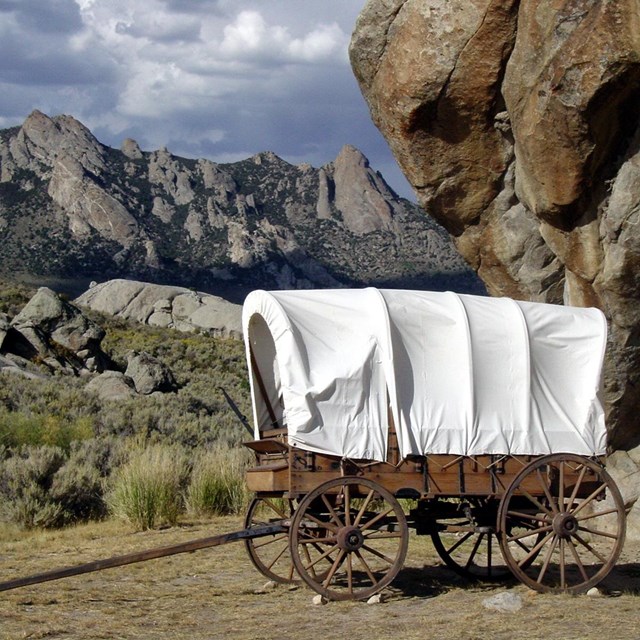Last updated: January 14, 2021
Article
Places to See Oregon Trail Ruts

Photo/NPS
The Oregon and California trails provided pathways to the Pacific for fur traders, gold seekers, missionaries, and emigrants. From 1841 to 1861, more than 300,000 emigrants followed this route from the Midwest to fertile Oregon farmlands or California gold fields—trips that took five months to complete.
Over the years, thousands of wagon wheels and hooves churned the earth as they traveled west. Covered wagons struggled up hills in the mud left behind by torrential summer downpours. Emigrants fought to slow oxen down steep hillsides as they dug their hooves in to break. All of this activity left a discernable trail in the hard rock and a wider swale in softer soil. Though the wagon trains didn't all follow the same route, sometimes using cutoffs, the evidence of the tremendous amount of westward travelers can still be seen today.
Their traces are often referred to as wagon ruts and they can appear a variety of ways depending on the type of soil and the continued effects of water erosion. In some places, the ruts might look like a very obvious ditch, and in others they might be a wider, shallower, drainage.
One of the best ways to experience the Oregon Trail is by taking a step back in time while visiting a trail rut. Luckily, there are still places where you can have that experience today. Take a look at the the list below and plan your visit to the mid-1800s today!
These trail sites are working hard to protect these important historical resources. Please remember to treat these special trail resources carefully and with respect when you visit.
Please contact each site before you go to obtain current information on closures, changes in hours, and fees.



